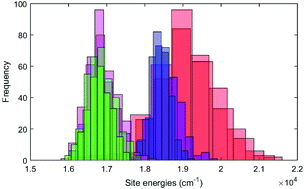Variety, the spice of life and essential for robustness in excitation energy transfer in light-harvesting complexes
Abstract
For over a decade there has been some significant excitement and speculation that quantum effects may be important in the excitation energy transport process in the light harvesting complexes of certain bacteria and algae, in particular via the Fenna–Matthews–Olsen (FMO) complex. Whilst the excitement may have waned somewhat with the realisation that the observed long-lived oscillations in two-dimensional electronic spectra of FMO are probably due to vibronic coherences, it remains a question whether these coherences may play any important role. We review our recent work showing how important the site-to-site variation in coupling between chloroplasts in FMO and their protein scaffold environment is for energy transport in FMO and investigate the role of vibronic modes in this transport. Whilst the effects of vibronic excitations seem modest for FMO, we show that for bilin-based pigment–protein complexes of marine algae, in particular PC645, the site-dependent vibronic excitations seem essential for robust excitation energy transport, which may again open the door for important quantum effects to be important in these photosynthetic complexes.

- This article is part of the themed collection: Quantum effects in complex systems


 Please wait while we load your content...
Please wait while we load your content...
